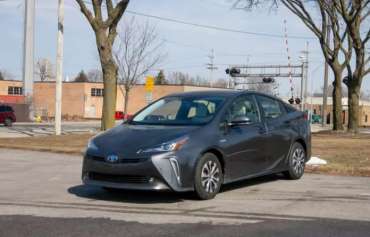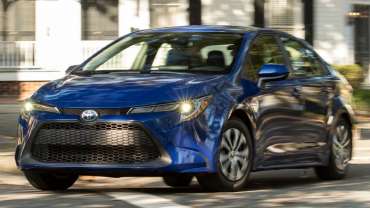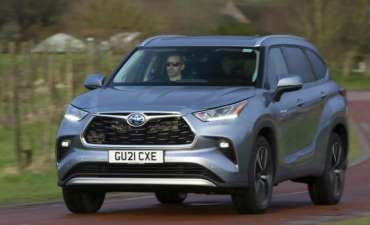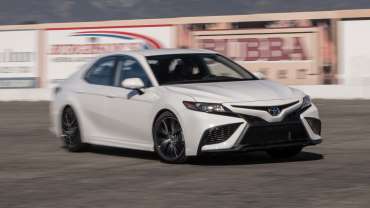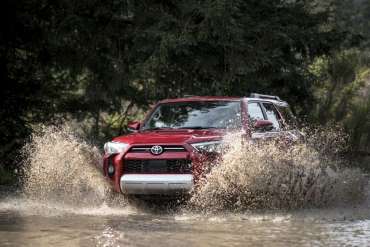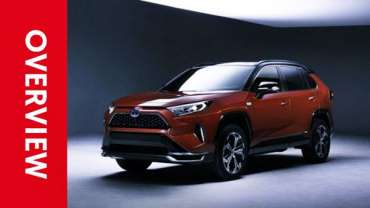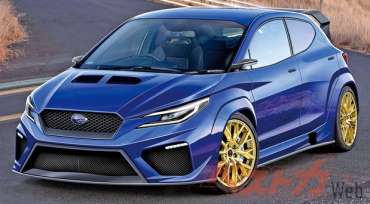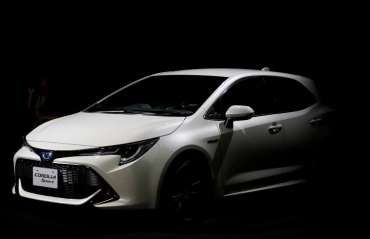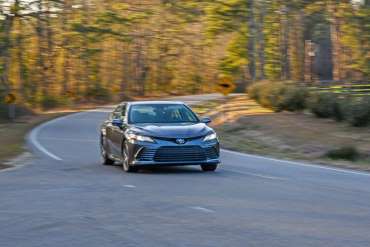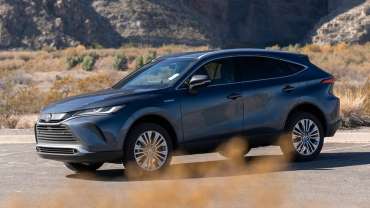Displaying items by tag: Toyota
Toyota Prius Review: High Mileage, for a Price
The verdict: Sky-high fuel efficiency with front- or all-wheel drive remains the main draw for Toyota’s iconic Prius hybrid, even as the aging current generation grows less competitive in other ways.
Versus the competition: When Toyota unveiled this generation of the Prius more than five years ago, we lauded the car’s advancements in handling and interior quality. The intervening years, however, have seen rivals catch up on fuel efficiency and pull ahead in refinement and other technologies — though none yet offer all-wheel drive.
Toyota added the option of AWD to the Prius two model years ago, and it remains one of the most fuel-efficient cars of its type, at least before you look at plug-in vehicles. The AWD Prius comes in LE and XLE trim levels; we evaluated an XLE. The Prius can be had with front-wheel drive in five trims, including a limited-run 2020 Edition that commemorates two decades since the Prius debuted. (Heritage notwithstanding, it’s a baffling move; slapping “2020 Edition” on a 2021 model invites needless confusion, not to mention a constant reminder of a year everyone wants to forget.)
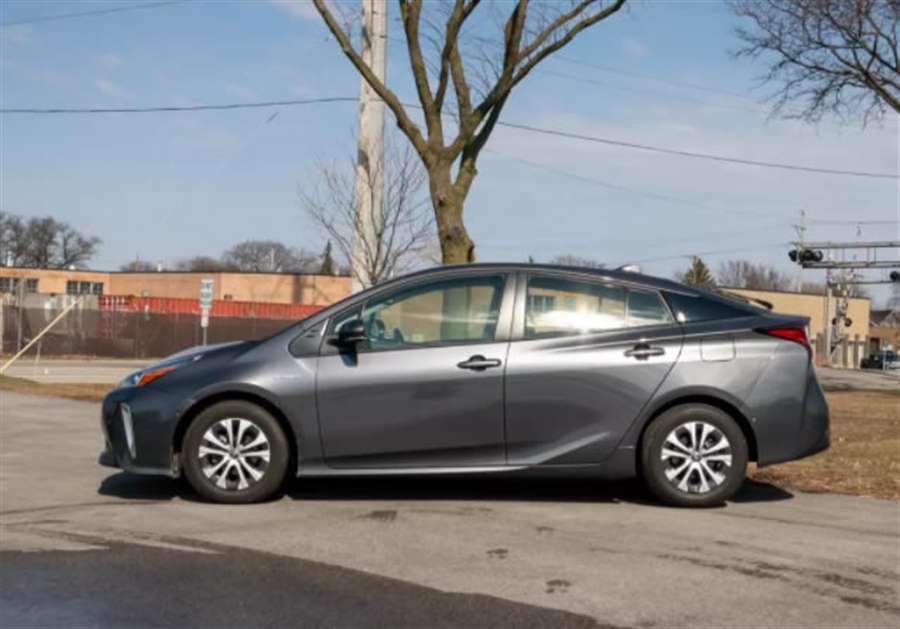
Besides the 2020 Edition, changes for 2021 include some augmented safety features and new Android Auto smartphone connectivity on most trim levels (Apple CarPlay remains standard). Stack up the 2020 and 2021 Prius or compare 2021 trim levels. Note, we separately cover the Prius Prime, a plug-in hybrid with an EPA-rated 25 miles of all-electric driving range on a full battery charge before the gas engine kicks in. (Here’s more about the main differences between a hybrid and plug-in hybrid.)
Gas Mileage: The Reason Anyone Buys a Prius
The Prius’ mileage leader is the L Eco, a base trim level that’s good for an EPA-estimated 56 mpg combined. Among plug-free cars, that rating trails only one rival: the Hyundai Ioniq Hybrid, whose base trim level, Ioniq Blue, gets an EPA-rated 59 mpg combined. That said, the L Eco trim accounts for less than 10% of Prius cars listed in Cars.com’s dealer inventory as of this writing. Most shoppers will end up with other trims of the Prius, which the EPA still rates a very good 52 mpg combined.
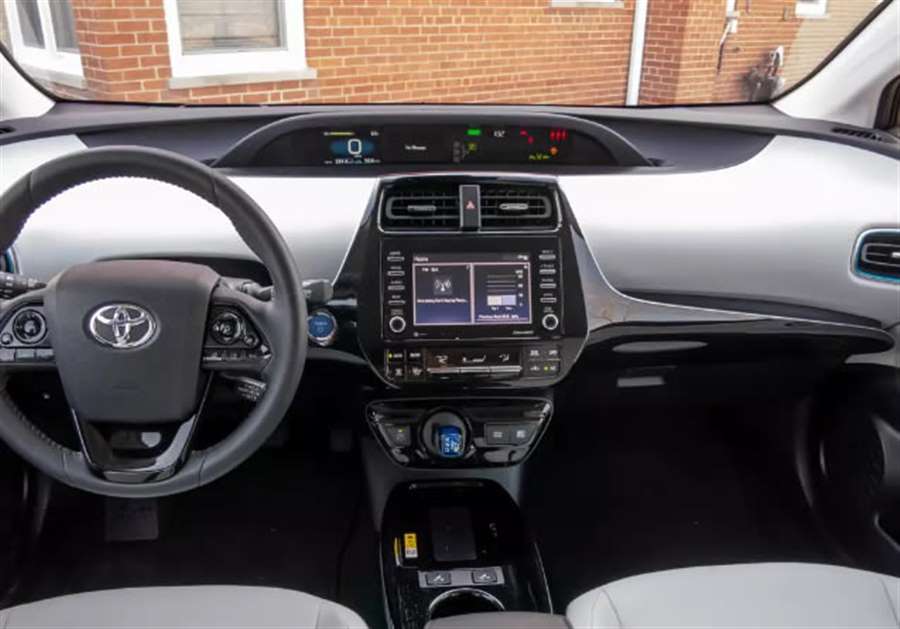
The Prius AWD, meanwhile, employs an additional electric motor at the rear axle, which powers the car continuously from a stop, then as-needed up to 43 mph. There’s no mechanical connection to the main powertrain, which pairs two electric motor-generators with a 1.8-liter four-cylinder engine. A power-split device with continuously variable properties doles out power to the wheels.
The whole of it makes for a combined 49 mpg in EPA ratings — short of the front-drive Prius but outstanding for an AWD vehicle that isn’t a plug-in. Our real-world testing returned results consistent with the car’s rating, with 46.6 mpg according to our calculations based on fill-up mileage ( 51.5 mpg on the trip computer) after 215 miles of mixed highway and suburban driving.
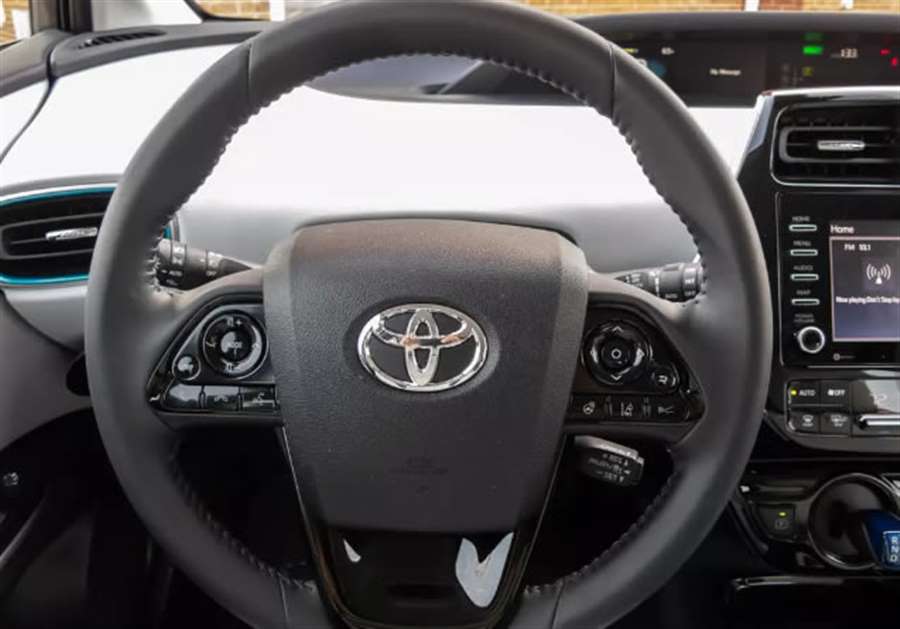
What You Give Up to Get There
As with most hybrids, electric operation alone is possible at low speeds under light acceleration, with the engine kicking in for anything beyond that. Under a combination of engine and electric power, the Prius has enough oomph; I needed most of the drivetrain’s reserves to claw my way up to 40 mph with 17 bags of mulch aboard — at least several hundred pounds — but power felt workably adequate.
That’s not to say the drivetrain is all that responsive. Press the accelerator while already in motion, and the Prius hesitates a beat or two before raising rpm to pull noisily ahead. Most modern CVTs implement quicker rpm transitions to mimic a step-gear downshift, but such programming usually trades fuel efficiency for responsiveness, so I seldom observe it with the CVT-style transmissions many hybrids use. The Prius, unsurprisingly, does none of that: Engine revs meander up or down in a slow, old-school fashion.
A few other downsides persist. Toyota’s regenerative brakes — a feature employed in all hybrids — impart a nonlinear pedal feel reminiscent of the technology’s early days. Response is tentative in the first inch or so of pedal travel, then becomes suddenly sharper as you press harder. So-called pedal linearity has improved among many hybrids over the years, even as a few non-hybrids introduce new forms of it.
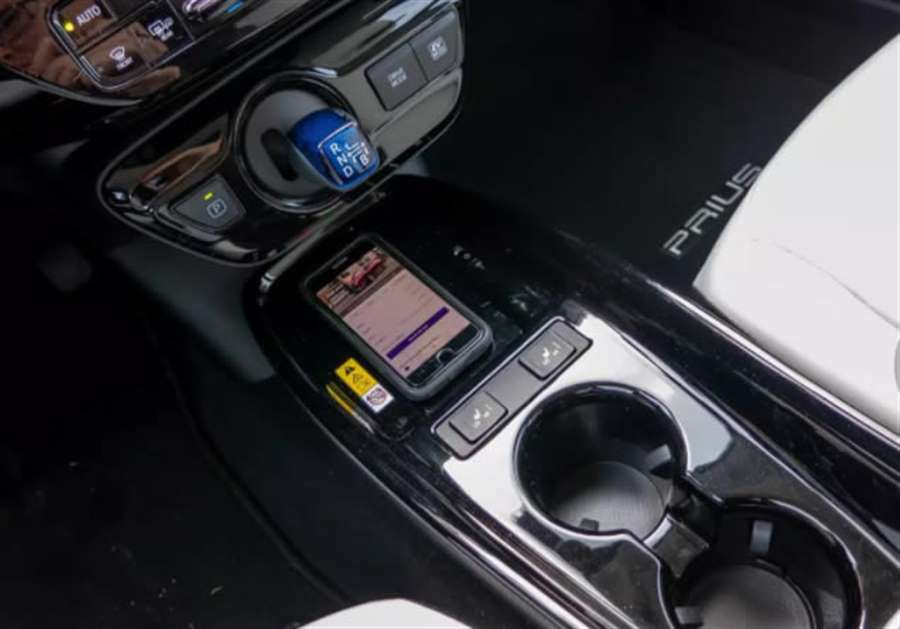
Ride quality and noise abatement also remain areas that could use improvement. At highway speeds, our test car’s efficiency-oriented Bridgestone Ecopia tires let out quite the howl, with adjacent trucks matching the ambient noise. The suspension sorts out minor bumps well enough, but anything significant sends turbulent aftershocks through the body. The Prius is not especially comfortable or quiet.
Is this the penalty for sky-high mileage at an affordable price? Maybe; the rival Honda Insight is no bank vault, either. Mass-market hybrids aren’t known for sophisticated suspensions or gobs of noise insulation, but some execute those things better than others. A redesigned Prius will probably improve on such aspects, and with the current Prius entering its sixth model year for 2021, time for a new version is nigh.
By contrast, the Prius’ hybridness has little bearing on its other deficiencies. Most trims get a touchscreen measuring just 7 inches diagonally — an inch short of what you’ll find in the base version of many mass-market cars — with modest screen resolution and undersized volume and tuning knobs. Apple CarPlay, Android Auto and Amazon Alexa integration are included with the 7-inch system, but they require a tethered connection as opposed to the wireless integrations that are expanding industrywide. Upgrade to the front-drive Prius Limited and you get the Prius Prime’s 11.6-inch vertically oriented touchscreen, but it confoundingly loses Android Auto connectivity. See our impressions of it otherwise.
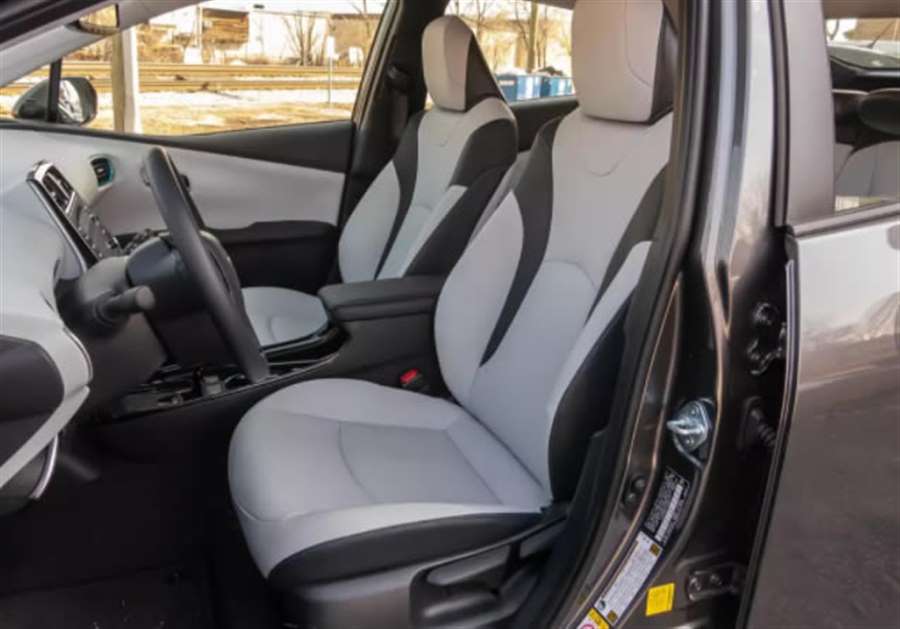
Where It Still Shines
An early example of Toyota’s well-executed TNGA platform, which now underpins many other cars, the Prius boasts improbably good handling. The steering has a touch of vagueness on-center, but it communicates lively feedback as you turn the wheel into corners. Body roll is nicely controlled, and the AWD model shows unexpected balance if you slide it around — something the Bridgestones easily allow.
Space efficiency, at least up front, is also among the Prius’ strengths. The low center console leaves good space for your knees and thighs, and all but the tallest drivers should find sufficient headroom, even with the seat elevated all the way. The backseat is a bit low to the floor, so adults may find their knees uncomfortably elevated, but we found sufficient clearance to fit bulky rear-facing child-safety seats behind a 5-foot-6-inch front passenger. (That’s not to say, however, that the Prius passed Cars.com’s Car Seat Check with flying colors; parents with young children should check out our full scoring.)
We measured 13.1 cubic feet behind the Prius’ backseat, a figure comparable to our audits for two other smallish hatchbacks, the Mazda3 (13.1 cubic feet) and Subaru Crosstrek (13.0 cubic feet). (Note that our independent accounting of cargo space differs from manufacturer specs, which we’ve found overrepresent hatch space, underreport trunk volume and are unreliable for comparison.)
The Prius earned top scores in most crash tests by the Insurance Institute for Highway Safety, but suboptimal results in the passenger-side small overlap front test kept the vehicle from garnering one of IIHS’ influential, if widespread, Top Safety Pick awards. Still, Toyota’s long list of safety and driver assist features is impressive: Automatic emergency braking with pedestrian detection, lane departure steering assist and automatic high-beam headlights are standard, as are adaptive cruise control and hands-on lane centering. Those last two features can both operate from a standstill all the way up to highway speeds. New for 2021 is the latest generation of Toyota Safety Sense, which adds more detection capabilities, and all but the base trim level get a blind spot warning system with rear cross-traffic alert. Top trims add curve-adaptive headlights.
Should You Buy a Prius?
The Prius starts around $25,500 for the cheapest front-drive trim. That’s roughly commensurate with Toyota’s immediate competition, and the base Prius doesn’t skimp on multimedia features or safety and driver-assist tech, as some rivals do. Optional AWD adds a modest $1,000-$1,400 to the Prius’ mid-level trims, depending on specifics; the cheapest AWD Prius lands comfortably under $30,000 (all prices include destination charges).
Ascending trim levels add items like faux-leather upholstery, heated front seats and a power driver’s seat. Oddly enough, you can’t get certain top-of-the-line features on any AWD model, and niceties like a memory driver’s seat, dual-zone climate control and genuine leather are unavailable on any 2021 Prius.
Loaded with factory options, the Prius tops out around $34,500. You should be able to find plenty of examples well below that, given about two-thirds of the new 2021 models listed on Cars.com are priced at or below $30,000. Still, budget-conscious shoppers might find wider affordability on the Insight, with 82% of its new 2021 models priced at or below $30,000 on Cars.com.
That said, the venerable Prius is bound to find plenty of shoppers. The current generation shows its age through its drivability and multimedia tech, but lower trim levels offer a good mix of value and efficiency — especially with AWD, a capability that hybrid shoppers would otherwise need an SUV to get.
2022 TOYOTA COROLLA: PREVIEW, PRICING, RELEASE DATE
The current-generation Toyota Corolla rolled out in 2019 as a hatchback, then followed in 2020 with a sedan and the model line’s first-ever hybrid variant. The current look is the sportiest one we’ve seen yet, as the Corolla adopted many of the styling cues of the larger Toyota Camry sedan with its gaping grille, muscular lines, and striking lighting elements.
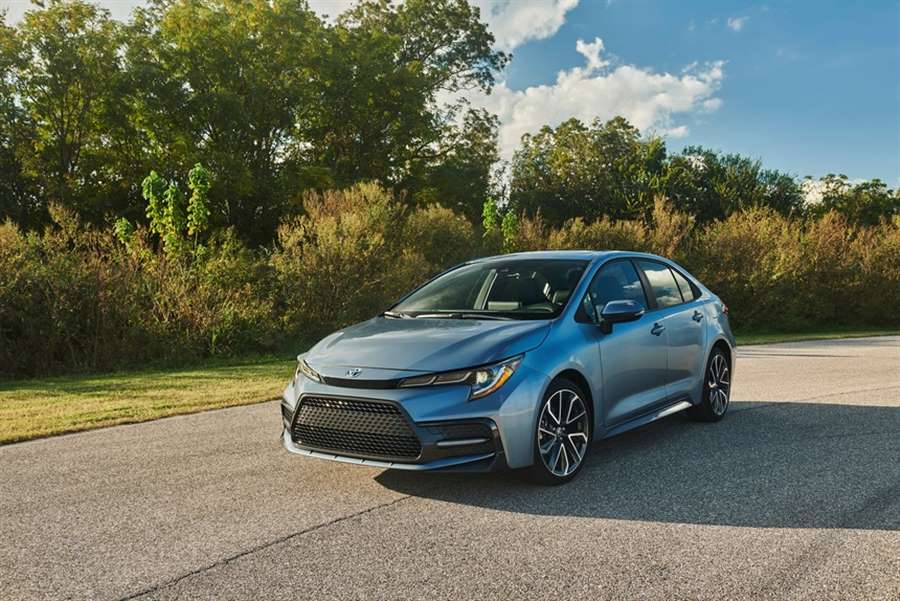
Inside, the Corolla fills its compact mission by offering decent space for five, although four is the ideal. The sedan’s wheelbase is about 2.5 inches longer than the hatchback, for improved interior space. The cabin features a dash-mounted touchscreen for infotainment and carefully placed controls. Fabric-trimmed seats are standard; the imitation leather seats are comfortable and have the look and feel of real hides.
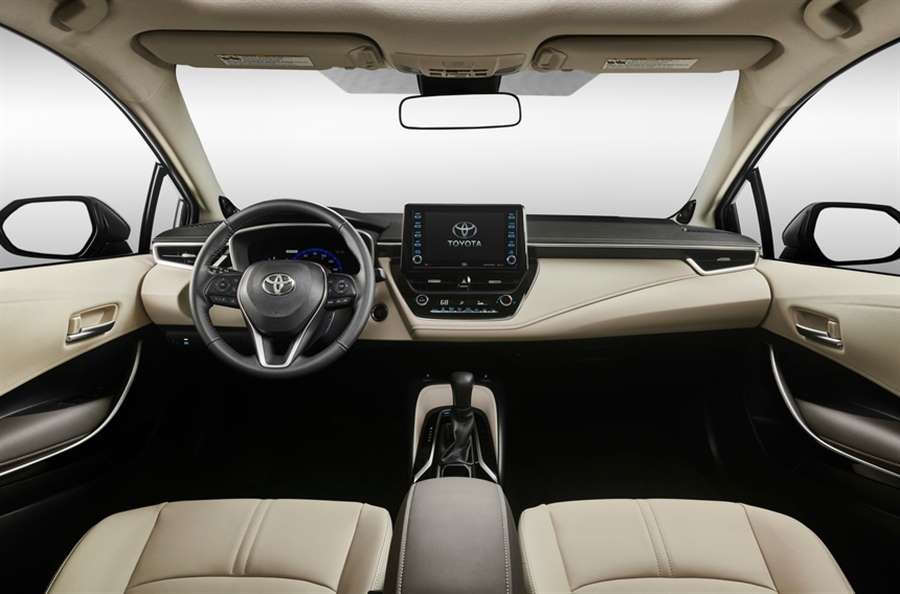
This year, Android Auto is standard, joining Apple CarPlay as the two most important smartphone compatibility options in the business. Base sedan models have a 7-inch touch-screen display, while all other trims come with an 8-inch touchscreen. The list of popular options includes navigation, wireless smartphone charging, and a premium audio system. Optional blind-spot monitoring is widely available. We’re not expecting additional changes for 2022.
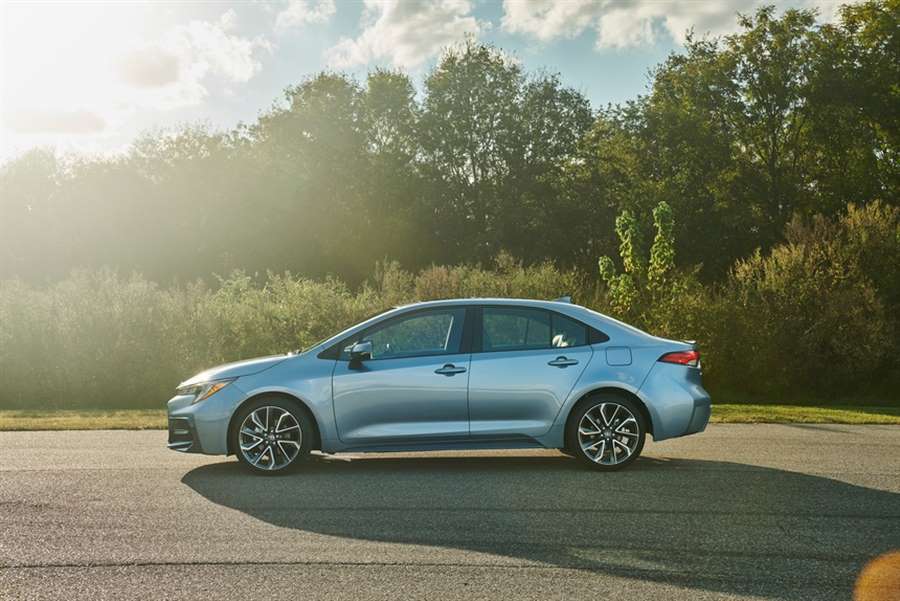
Under the hood, the Corolla features two engine choices. The base sedan models come with a 1.8-liter four-cylinder engine with 139 horsepower and 126 pound-feet of torque. This one shuttles power to the front wheels utilizing a continuously variable transmission or a 6-speed manual transmission. All hatchback models and some sedan trims come with a 2.0-liter four-cylinder engine with 169 horsepower and 151 pound-feet of torque. The engine also works with a CVT or a 6-speed manual.
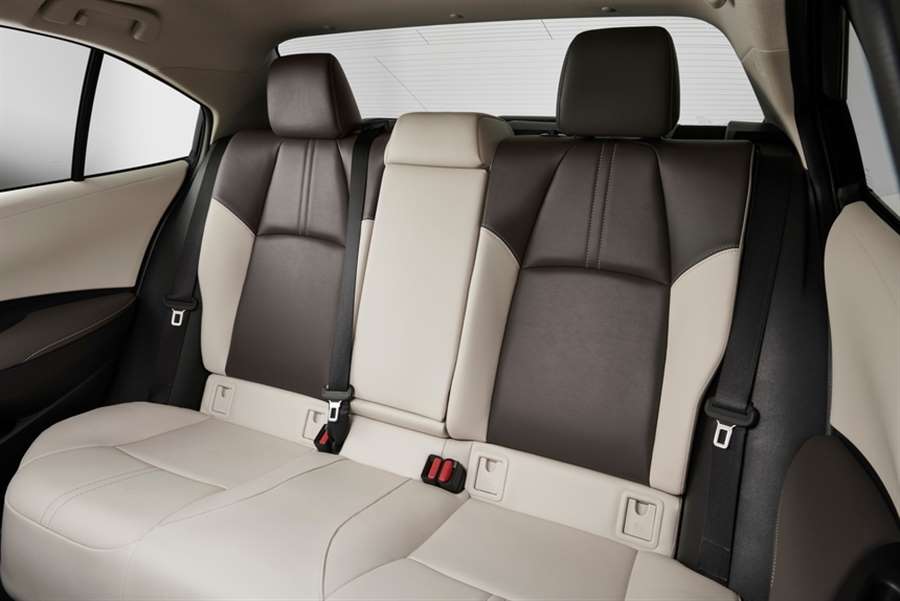
The larger engine is surprisingly the more efficient of the two, delivering as high as 40 mpg highway on some trims. That’s 2 mpg more than the best fuel economy of the base engine.
If you’re shopping the Corolla Hybrid, Toyota uses the 1.8-liter engine and operates it in the efficient Atkinson cycle to deliver 121 horsepower and 105 pound-feet of torque. This model makes an EPA-estimated 52 mpg combined, which is 30-percent higher than the best gas model.
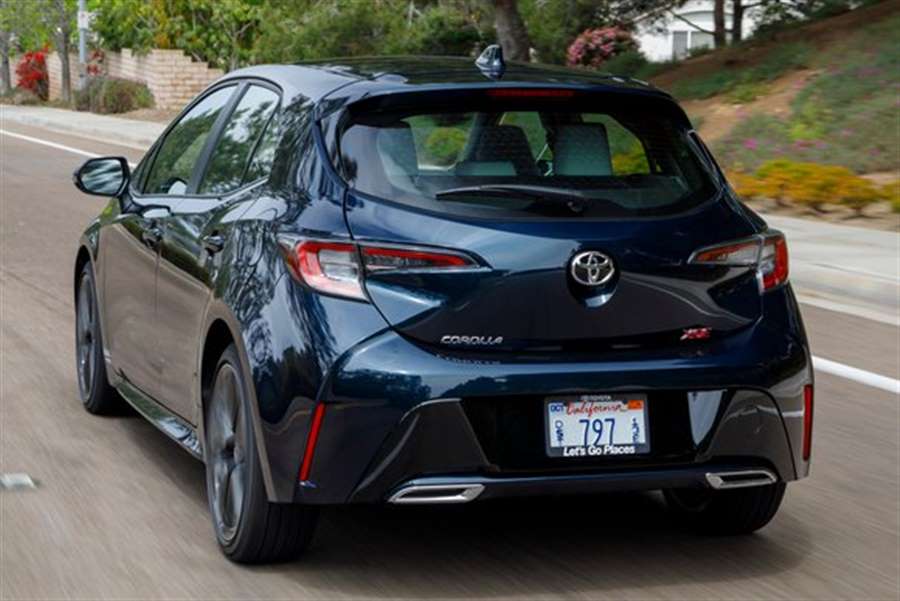
PRICING & RELEASE DATE
There is no official on-sale date for the 2022 Toyota Corolla, but we expect it will arrive in the spring based on previous release schedules.
Pricing is also not available. As a carryover vehicle, we expect pricing to remain close to the current model’s $20,880 to $29,165 (destination fees included) MSRP for the sedan. Pricing for the hatchback and hybrid is slightly higher.
Toyota Highlander review
A capable and seriously practical family SUV with hybrid power as standard
The Toyota Highlander isn’t a car that’ll be familiar to most people in the UK, but if you live in the USA, Russia or Japan you may well recognise it. This fourth-generation model is the first that’s been available in Western Europe and the UK, with Toyota now deciding that it has a gap to fill in its passenger car lineup.
The Highlander is a large, seven-seater SUV in the same vein as cars such as the Kia Sorento, Skoda Kodiaq and Land Rover Discovery – but with a uniquely Toyota character and specification. Chief among these is its hybrid powertrain, which is the only engine option and promises low running costs and a smooth, easy driving dynamic.
It sits really comfortably in between Toyota’s RAV4 SUV and its Land Cruiser off-roader, which was previously the only seven-seat Toyota car and only available with a rather agricultural diesel engine.
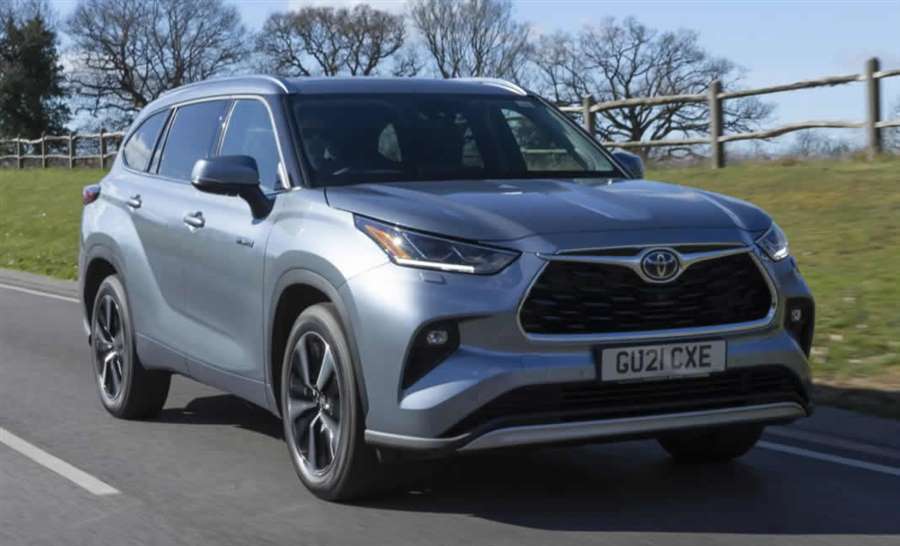
Simple model lineup makes for an easy choice
Toyota’s really made choosing a Highlander easy. There’s a pair of well-equipped trim levels and just one engine, so there’s no need for buyers to navigate a confusing mess of option packs.
The range kicks off with Excel models, which have almost all the equipment you could want – 20-inch alloy wheels, heated leather seats, tri-zone climate control, LED headlamps and a panoramic sunroof to name but a few highlights.
Excel Premium trim adds a few choice luxury touches, such as a head-up display, ventilated front seats and a ‘smart’ rear view mirror (actually a screen with rear camera feed), but unless you’re truly committed to owning the best variant there’s almost no need.
This does mean that the Highlander’s starting price is significantly higher than some of its main rivals, but the gap narrows when you consider similarly-equipped models. It effectively straddles the line between premium hybrid SUVs, such as the Volvo XC90, and more value-oriented offerings such as the Kia Sorento.
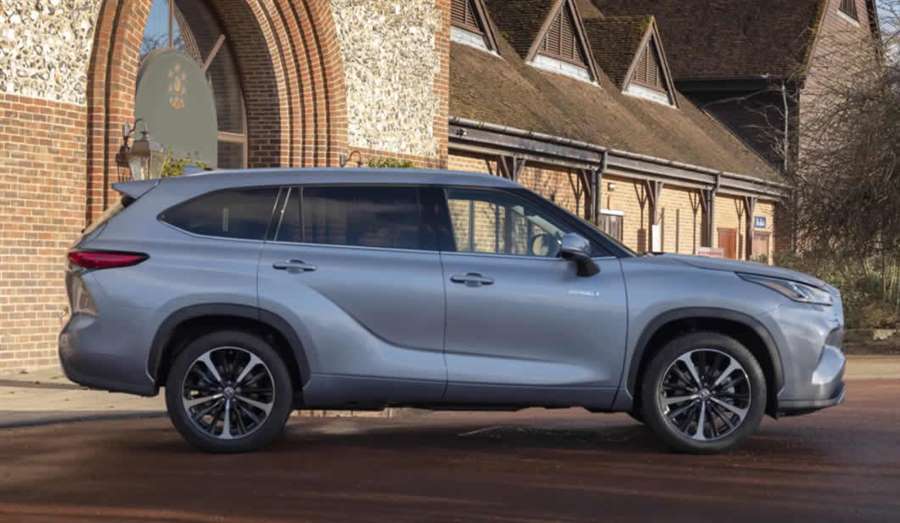
Hybrid engine is particularly good
Toyota’s been building hybrid engines for more than two decades, and its latest effort in the Highlander is a particularly good offering. It’s a self-charging hybrid rather than a plug-in – Toyota says drivers of cars like this typically take longer trips than would suit their limited electric-only range. Though it hasn’t totally ruled out a plug-in Highlander in the future (the mechanically similar RAV4 has a PHEV option), it would likely involve losing the two rearmost seats to make space for the battery – making it unlikely.
It pairs a 2.5-litre four-cylinder petrol engine with two electric motors, shuffling between the two power sources as it sees necessary. It’s got plenty of power, even for such a big car, which means you don’t have to work the engine hard. That eliminates a typical issue of hybrid cars, namely that they tend to rev uncomfortably high – not an issue with the Highlander unless you really try to press on.
It’s also highly refined – nearly silent at a cruise – and very efficient, easily matching its diesel competition in this area. Smooth and powerful, it’s a great match for the Highlander’s bulk.
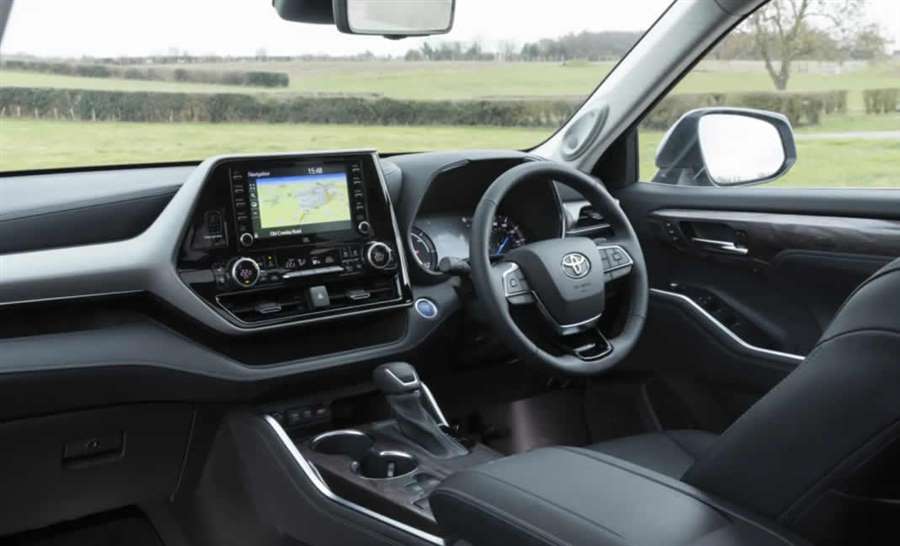
Hugely versatile interior
The Highlander seats seven, though the third row is somewhat tighter than rivals such as the Land Rover Discovery – it’s better suited to children or short journeys with adults.
Toyota Highlander rear three quarterEnlarge0videoEnlarge16photo
There’s loads of room in the two forward rows, though, and the centre row slides forwards and back by 180mm to balance legroom and luggage space.
The boot’s incredibly practical, too. With all seven seats in place there’s more luggage space than you find in a Land Rover Discovery or a Volvo XC90. In five seat mode, it’s bigger yet, and with all the rear seats folded there’s a cavernous 1,909 litres of space up to the roof, with a completely flat floor.
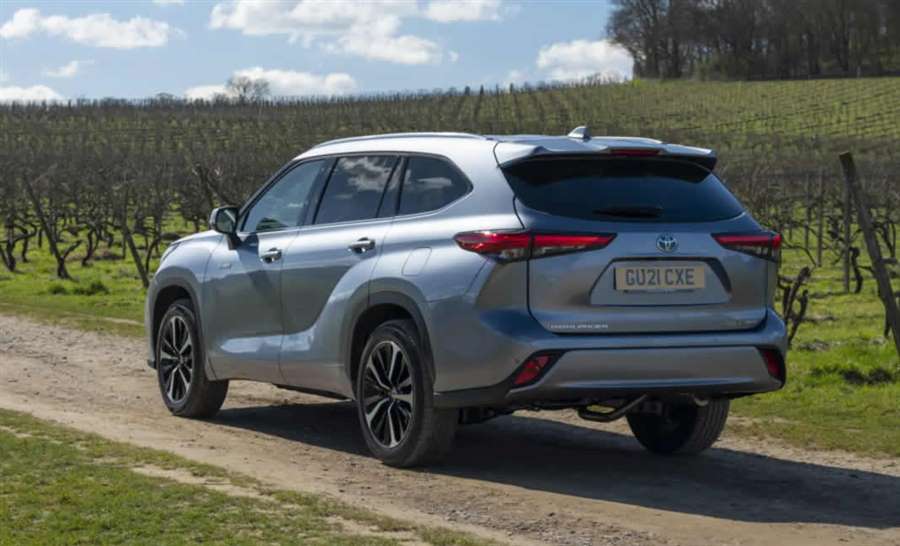
Toyota Highlander practicality and boot space
The Highlander is one of the largest cars Toyota sells – smaller only than the long-wheelbase Land Cruiser and the decidedly van-like Proace Verso.
Those exterior dimensions have been well-used and translate into a spacious interior with seven seats and a cavernous boot.
The front seats are particularly wide, soft and comfortable, as you’d perhaps expect for a car that sells very well in the USA. The second row is great too, with space for a six-foot adult to stretch out.
The third row’s a little tighter. Unlike the Land Rover Discovery, you won’t particularly want to seat adults back here, at least not for long trips – but they’ll be fine on short journeys, and there’s plenty of space for children.
The second row slides fore and aft by 180mm, too, allowing you to effectively balance legroom between the seats. Isofix child seat mounting points are present in the two outer seats.
Interior stowage space is excellent, and has been very well thought out – not always a given, even in cars that purport to be family friendly. The Highlander offers a big glovebox and a large centre cubby under the armrest for larger items, while storage for smaller oddments is ample – there are smartphone-sized pockets in all four doors, ideal when every passenger has their own device.
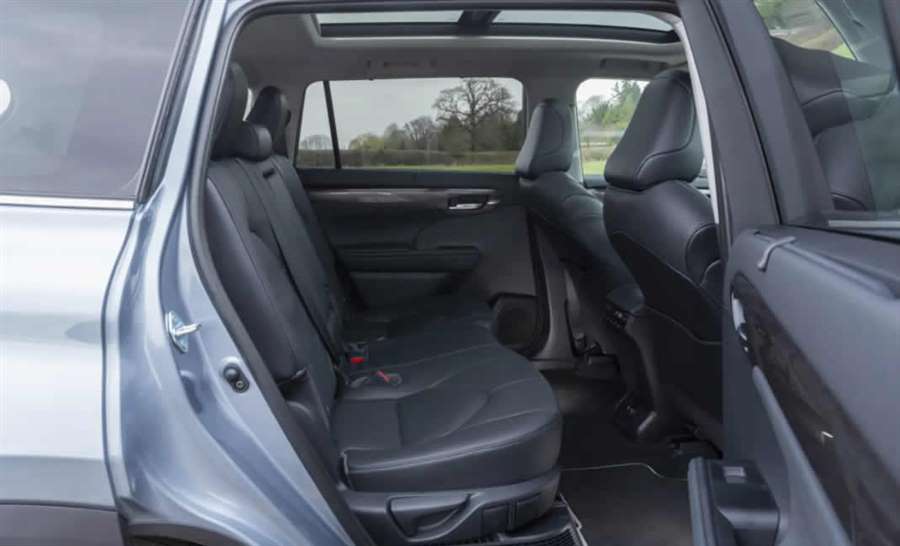
Boot
The Highlander’s boot is one of the biggest around, even among similar large SUVs. With all seven seats in place, there’s still 332 litres of space – that’s the size of a good-sized supermini’s boot, and easily enough to accommodate a family’s weekly shop.
Drop the third row of seats, meanwhile, and you’ll liberate 658 litres – and with both rear rows of seats folded there’s a cavernous 1,909 litres up to the roof. The rear seats also go totally flat, making it easier to load bulky or awkward items, while all cars get an electric tailgate. On top-spec Excel Premium cars, it's gesture-operated by waving a foot under the rear bumper.
If that huge boot still isn’t enough for you, the Highlander will tow a trailer up to 2.0-tonnes in weight.
Safety
The Toyota Highlander hasn’t yet been tested by safety organisation Euro NCAP, but the signs are encouraging for it scoring well when it is.
North American market models were very highly rated by the USA’s Insurance Institute for Highway Safety, earning their highest commendation – a Top Safety Pick+.
The mechanically similar, albeit smaller, RAV4 SUV scored a full five stars when NCAP tested in 2019, which is a further encouraging sign.
Toyota’s loaded the Highlander with active safety aids, too, as part of its Advanced Toyota Safety Sense pack. All models come with autonomous emergency braking capable of detecting vehicles, pedestrians and cyclists in day or night conditions. There’s also Emergency Steering Assist and Intersection Turn Assist, both of which will actively steer you away from an impending collision.
Lane departure warning, adaptive cruise control, automatic high beam headlights, blind spot monitors and rear cross traffic alert complete a thoroughly impressive armada – and it’s all standard equipment on both of the Highlander’s trim levels.
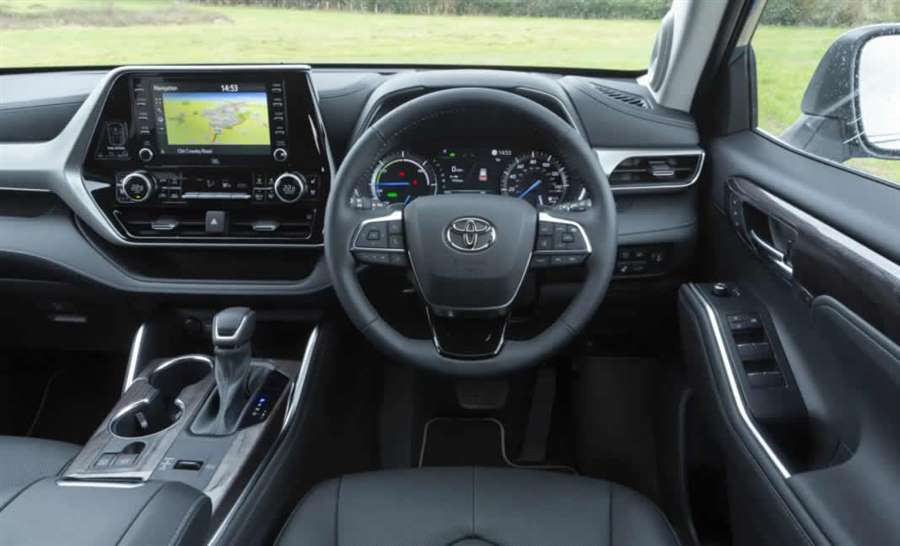
Toyota Highlander interior and comfort
Toyota’s taken plenty of lessons from its RAV4 SUV when it comes to the Highlander’s interior trim, and in many ways that’s a really good thing.
It’s lovely and straightforward to navigate, with most of the controls positioned up relatively high on the dashboard so you don’t have to take your eyes too far off the road to work them, and in a sensible layout.
Better still, functions are, for the most part, controlled by big, chunky buttons and dials rather than awkward touch-sensitive pads. As a result, we think most drivers will feel at home in here very quickly indeed.
Build quality feels up to Toyota’s usual high standards and the Highlander looks as though it’s well-equipped for the rough and tumble of family life. Ergonomics are good, too – it’s not too high up of a clamber into the driver’s seat, and there’s plenty of adjustment. The view out of the narrow rear window is rather compromised, but that’s a gripe you’ll find on most cars of this size and shape.
Those expecting sumptuous luxury like you’d find on a Land Rover Discovery may be disappointed, though. With the exception of a little shiny trim and some token fake wood, almost everything’s a shade of dour grey or black, and the design is practical rather than stylish. Thank goodness for the standard panoramic glass roof, or the Highlander’s interior would feel very dark indeed.
The infotainment system is also rather below-par by the standards of the segment. Its 8.0-inch screen feels rather small perched atop the dashboard, and the interface is outdated and awkward to use. That’s grating against more expensive rivals such as the Land Rover Discovery or Volvo XC90 – but it’s embarrassing to think that base-model Kia Sorentos or SsangYong Rextons come equipped with a superior infotainment system.
The specification is otherwise very good, however. All models come with the aforementioned panoramic roof, but keyless entry, LED headlamps, triple-zone climate control, a wireless charging pad, leather upholstery and a premium JBL sound system are also present even on the ‘base’ model – a high level of spec that goes a long way towards explaining the Highlander’s entry price compared with some rivals’ more Spartan accommodations on their lower trim levels.
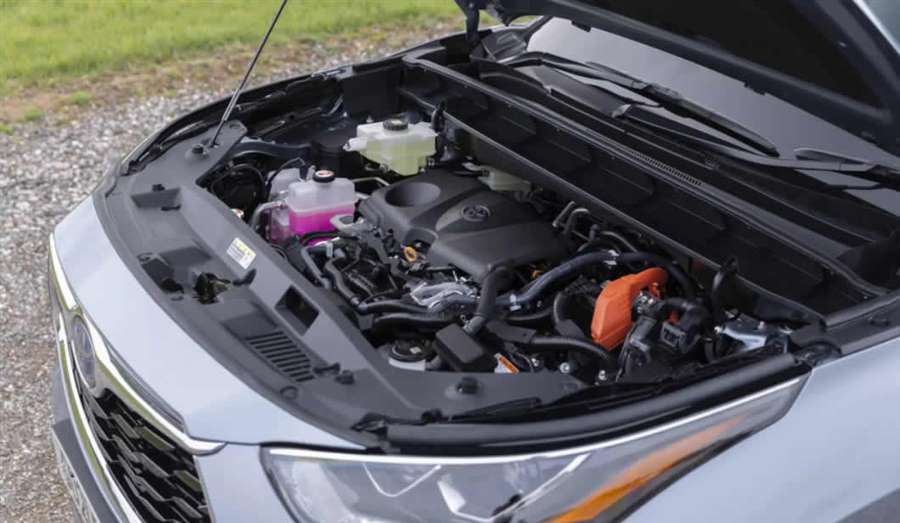
Comfort
Refinement is one of the Highlander’s most impressive points. The hybrid engine is virtually silent at a cruise, and provided you don’t hoof it and keep the revs low it’s very quiet around town too. Combined with low levels of road noise, the most intrusive sound you’ll hear is a moderate level of wind noise whipping around its bluff front end and large door mirrors.
With soft suspension, the Highlander rides well over most surfaces – it’s not as pillowy soft as the Land Rover Discovery’s air springs but still deals effectively with all but the largest potholes. It resists body roll surprisingly well for such a tall car, too, helping reduce potential car sickness – ideal when you could have the back rows full of children…
The front seats are heated on all models, while top-spec cars come with heated and ventilated front seats, heated rear seats and a heated steering wheel. Particularly toasty in the winter.
Toyota Highlander running costs and mpg
What is miles per pound?
Hybrid petrol engines 7.0 - 7.1 mppLow figures relate to the least economical version; high to the most economical. Based on WLTP combined fuel economy for versions of this car made since September 2017 only, and typical current fuel or electricity costs.
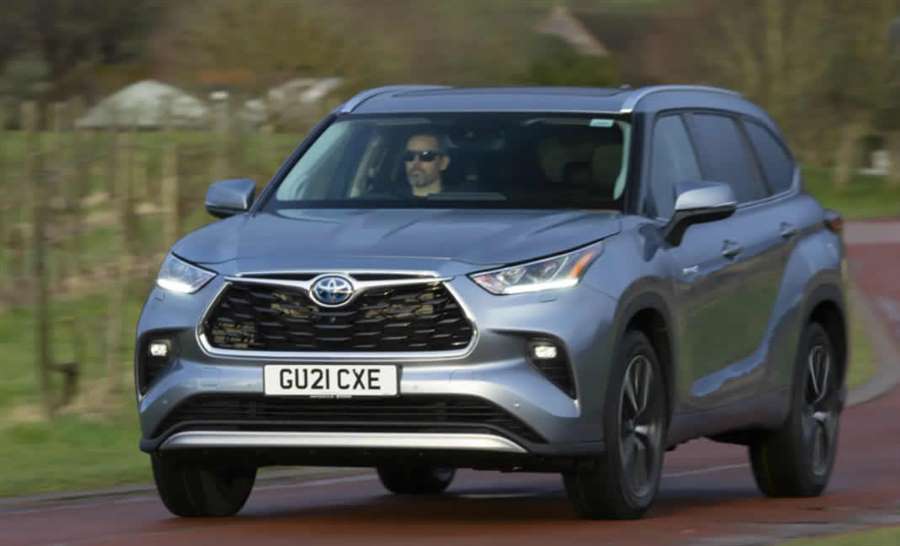
Running costs for the Toyota Highlander should prove impressively low by the standards of the large SUV class, but a slightly deeper dive than usual is required to figure out why.
It’s true that, without a plug-in hybrid (PHEV) model in the range, Toyota can’t claim anything like the 100.9mpg Volvo can for its XC90 T8 (when tested on the WLTP cycle). However, numbers like these are often only achievable with short journeys and regular charging stops. Toyota reckons buyers of large SUVs like the Highlander want a vehicle that’s also efficient on longer journeys.
To that end, fuel economy from its single self-charging hybrid powertrain ranges from 39.2 to 39.7mpg – and during a long, mixed test route we bested that with over 41mpg showing on the trip computer.
That’s a highly impressive figure and one that’s comparable to a lot of diesel SUVs. However, unlike a modern diesel, the Highlander doesn’t require a long warmup period or regular substantial journeys to clear out its emissions systems – it’ll provide strong economy on short runs just as well as it does longer ones.
CO2 emissions range from 160-163g/km, meaning the Highlander attracts a low first year VED bill and even lower company car tax. Those figures are on a par with the Kia Sorento Hybrid, which starts at 158g/km – however, once you apply a similar level of specification, the Kia’s CO2 is higher.
Few surprises here – Toyota cars are some of the most reliable vehicles you can buy, and its hybrids are legendary for their longevity. Just look at the number of Prius taxis clocking up mega miles in cities around the world…
While there’s not yet any data on the Highlander’s past in the UK – remember, this is the first time it’s been available in Western Europe – its reputation in the USA in particular is of a very solid and reliable vehicle.
Like all Toyotas, it’s backed up with a five-year, 100,000 mile warranty, and Toyota dealers are known for providing excellent, fuss-free service.
Toyota Highlander engines and performance
Strong performance, but not for speed demons
Choosing an engine for your Toyota Highlander couldn’t be easier – there’s only one, so you like it or lump it.
It’s the latest evolution of Toyota’s 2.5-litre self-charging hybrid powertrain, similar to the engine found in the RAV4 as well as some Lexus models. It pairs a four-cylinder petrol engine with two electric motors, one on each axle providing four-wheel drive – though the car stays front-wheel drive until it senses a loss of grip.
We’re pleased to say that for most drivers, it should provide stellar service.
With 248hp it’s certainly no slouch – 0-62mph is dealt with in 8.3 seconds, which is more than fast enough for a family SUV. What that power really does is mean you don’t have to strain the Highlander’s engine to make good progress.
That’s important as common to all Toyota hybrids is a continuously variable transmission. These have the tendency to send the revs spiralling high as soon as the driver asks for a bit of extra pace, making for a raucous experience. But with the Highlander’s ample pulling power, especially at low speeds where the two electric motors can really lend a hand, the engine remains hushed unless you really floor it.
It’s possible to force the Highlander to drive in ‘EV’ mode for a few miles, by pressing a button near the gear selector, but for the most part it’s best to simply let the car get on with it. It’ll shuffle between power sources all by itself, and the electric motors can cut in at speeds up to 78mph so they’re even useful on the motorway.
There are four other driving modes, named Eco, Normal, Sport and Trail. Eco dulls the throttle response in a bid to force you to drive more carefully, but it makes the Highlander feel rather sluggish. Sport goes too far the other way, sharpening responses to the point where it’s fairly difficult to drive the car smoothly. We’d recommend leaving the Highlander in Normal mode most of the time.
Trail Mode optimises the four-wheel drive system and accelerator for the best grip off-road. We haven’t had the opportunity to test the Highlander’s ability in the rough stuff, but it’s not really intended as a hardcore mud-plugger – opt for a Land Cruiser if that’s your priority.
Handling
One look at the Toyota’s bulky bodywork ought to be enough to reassure you this isn’t a particularly sporty car. But that’s fine, because it doesn’t try to be – instead, the Highlander’s strength is comfort.
That doesn’t mean it’s a wobbly mess, though. In fact, with a low centre of gravity, it controls body well much better than you’d expect for a car this size.
Toyota Highlander rear corneringEnlarge0videoEnlarge16photo
The steering is lightweight and direct, so it’s easy to manoeuvre the Highlander at slow speeds and position it where it needs to be on the road. That does translate into being slightly twitchy on the motorway, however.
A total lack of meaningful feedback, however, means those who really enjoy driving ought to opt for something more engaging, such as a Skoda Kodiaq.
Toyota Highlander verdict
Should you buy a Toyota Highlander?
The Highlander is a surprise hit from Toyota, packing an incredibly family-friendly interior into a package that’s comfortable, efficient, and very well-equipped.
It comfortably ticks every box that’s expected of a large family SUV and should prove conveniently painless to own, too.
The value story isn’t quite as strong as it needs to be for us to recommend it outright, however. A Highlander Excel is more expensive on manufacturer PCP (at the time of writing) than a Volvo XC90 B5 – a car that feels far more premium, and is better to drive too.
It’s even within spitting distance of the excellent Land Rover Discovery, and significantly more expensive than the fiercely capable – albeit slightly smaller – Kia Sorento Hybrid.
The Highlander’s low CO2 and petrol-fuelled powertrain make it a good choice for a company car, though, and if you’re a private buyer who plans on keeping it for a long time then there’s little else we’re so confident about labelling as reliable.
There aren’t that many direct rivals for the Highlander, so if a well-appointed and well-built hybrid SUV – that doesn’t plug in – is on your shopping list, we don’t think you’ll be disappointed.
2021 Toyota Camry SE First Test: Is Good Enough Good Enough?
The competition is stronger than ever. Can a refreshed Camry hold its own?
We all know why the Toyota Camry is the default for many when they need point A to point B transportation. It's well-priced and spacious, carries Toyota's reputation for reliability, and has almost always ranged from decent looking to, today, actually handsome. But the midsize sedan segment has recently been shaken up. The new Kia K5 and Hyundai Sonata (among others) all represent stiffer competition than ever before, and we were left wondering: Can the refreshed-for-2021 Toyota Camry keep up with its revitalized rivals?
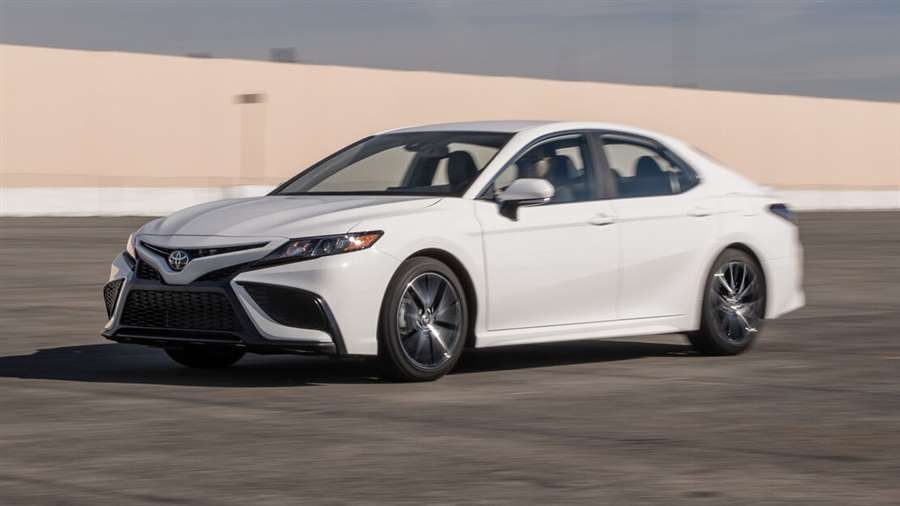
On paper, the answer is yes. The Camry's SE's 2.5-liter naturally aspirated I-4 makes a healthy 203 horsepower and 184 lb-ft of torque. That makes it the least powerful Camry on sale, but on the flip side, also gives it a relatively large 23-hp power advantage over competition like the Kia K5 and the Hyundai Sonata. Both of those cars use a 1.6-liter turbocharged four-cylinder that kicks out 180 horsepower as their base powertrain. And so the SE-trimmed car we had for this test punched above its weight, something MotorTrend en Español editor Miguel Cortina felt from the seat of his pants. "The engine and the transmission feel like they are eager all the time, sometimes too eager," Cortina said. "However, that's not necessarily bad. I'd rather complain about the throttle response being a bit too aggressive than sluggish. The Camry doesn't feel like that. It delivers on the basics without falling short."
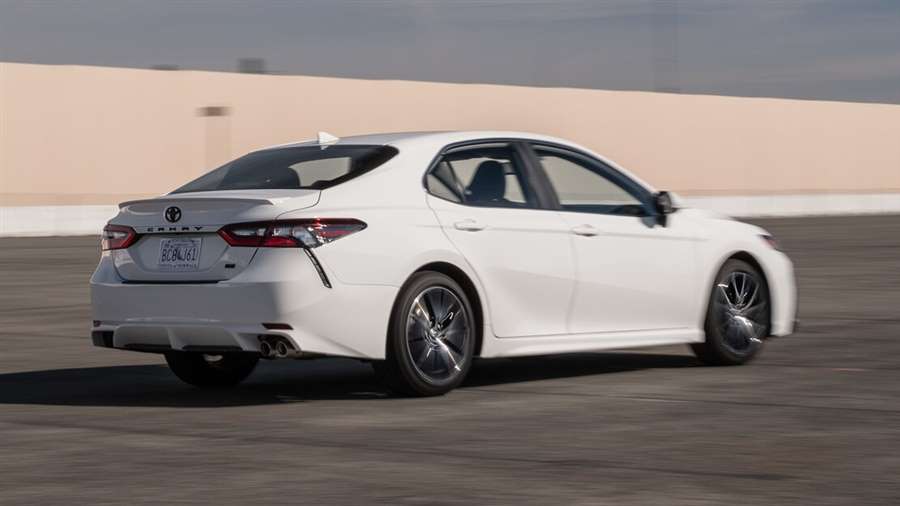
Cortina's impressions on the road were backed up at our test track. At 7.5 seconds to 60 mph, the Camry SE is 0.3 second quicker to 60 than either a K5 EX or a Sonata SEL Plus. The gap is just 0.1 second smaller in the quarter-mile, with the Camry running all 1,320 feet in 15.8 seconds and the aforementioned Koreans doing the job in 16 seconds flat. The longtime rival Honda Accord, however, manages a quicker 0-to-60 time of 7.2 seconds and finishes the quarter mile in 15.5 seconds despite having 11 fewer horses in the stable.
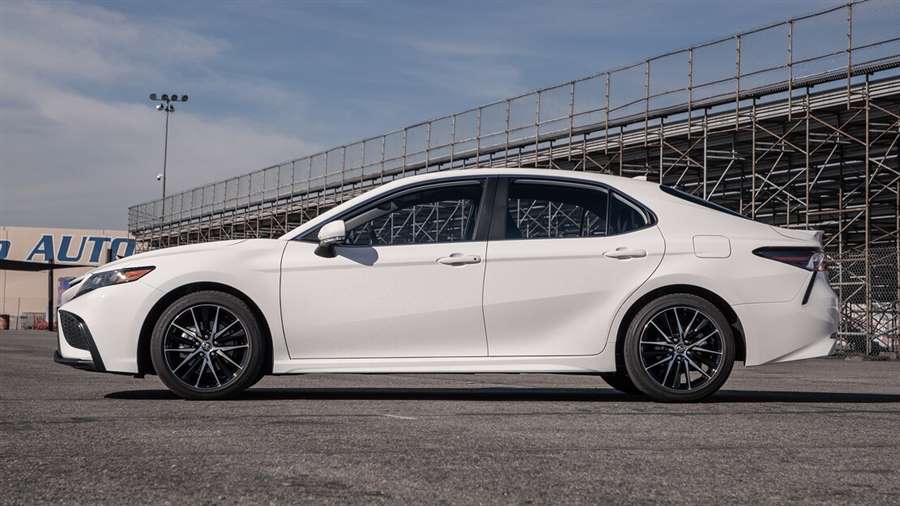
Move from the drag strip to the skidpad, and the SE-trimmed Camry still impressed. Family sedans like the Camry SE, Sonata SEL, and K5 EX are never going to be handling all-stars—the exceptional Honda Accord notwithstanding—but the Toyota impressed road test editor Chris Walton once he started hooning it around our figure-eight test. "This car is surprisingly fun and capable on the figure eight," Walton said. "The firm brake pedal remains trustworthy lap after lap, and it's easy to modulate. There's no funky emergency braking ABS; the brakes release when I release. The steering weight is just right and feels reasonably natural. There's exceptional balance on the skidpad, vacillating between rotation and understeer, where the ESC nibbles away to straighten it out without throwing the anchor."
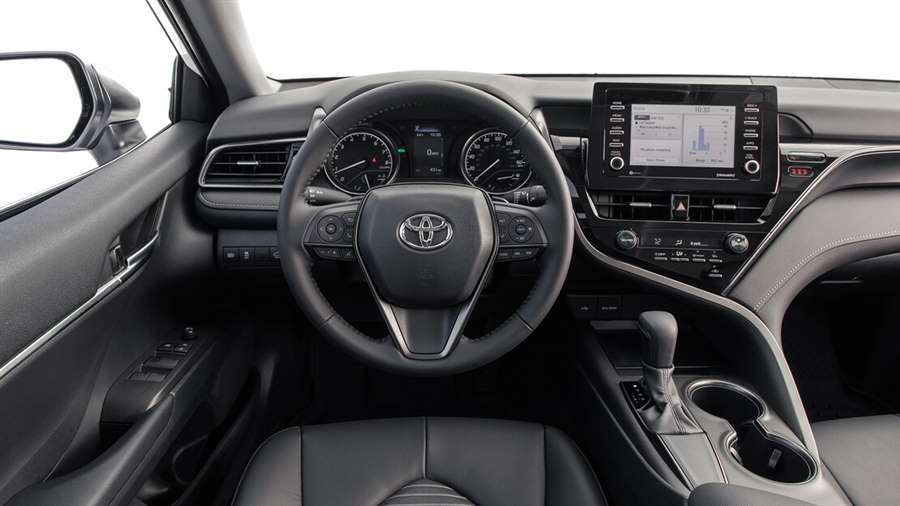
Yet again, the numbers back up our gut feeling. The Camry is a solid contender when stacked up against the competition, which either ties our Camry or ekes out a marginal advantage. The Toyota managed a figure-eight time of 27.4 seconds at a 0.62 g average, exactly the same time as the Kia K5 EX. The Accord EX-L we recently tested, however, is a respectable 0.3 second quicker around the lap and managed a marginally better 0.63 g average.
The Camry's agility translates to the road, too. Senior features editor Jonny Lieberman said the Camry is "better to drive than it needs to be" but noted that it's "not nearly as good to drive as the Accord," an impression supported by numerous other voices on staff. In fact, most of us were impressed with the way the Camry went down a road but noted the Accord is still the better handler.
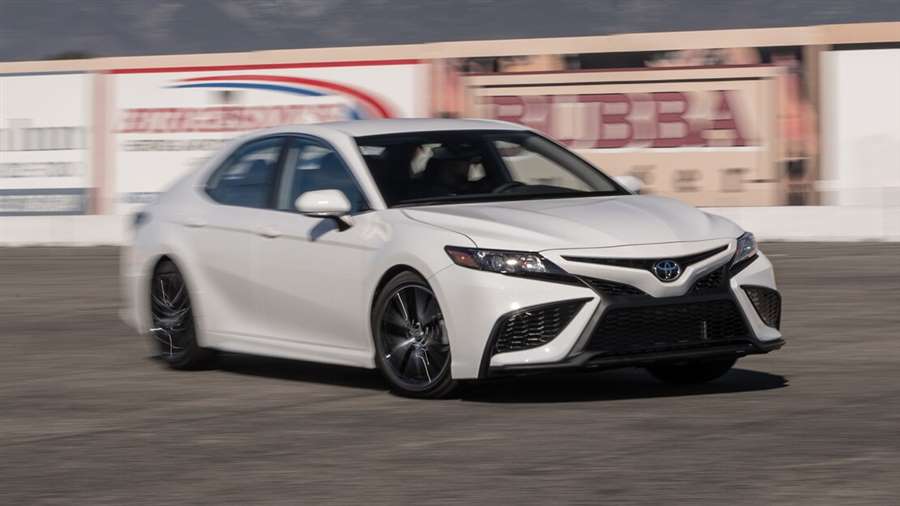
Niceties that exist in every Camry are present in this low-spec SE model. The trunk makes loading and unloading easy with a massive aperture and offers up 15.1 cubic feet of free space to play with. A comfortable seating position is easy to find, and ingress and egress are a snap, too. In addition, the gauges are clear and easy to read, there's ample leg- and headroom in the second row for passengers, and a cushy suspension tune is perfect for those who prefer their family sedans to waft down the road.
Letdowns? In this SE, there's the low-rent interior and dated infotainment display, despite the recent refresh. The soft suspension doesn't control the body as well as we'd like overall, leading to more pronounced up and down motions over high-amplitude bumps, and there's pronounced wind and tire noise in the cabin. All in all, though, the midsize family sedan segment might be more competitive than it's ever been, and the Camry is a solid performer. There are better choices, but for our car's $29,217 as-tested price, you could certainly do worse.
New Toyota 4Runner Coming in 2023? Find Out Here!
Apart from being the fan-favorite Toyota model in the lineup and being one of the last North American models still assembled in Japan, the Toyota 4Runner is consistent. In fact we’ve often referred to this iconic off-roader as the king of consistency. For the better part of 11 years, the fifth model generation has been available at dealerships and commanding trails. While we at Toyota of Clermont are thoroughly enamored by the current model year, even we have to admit that change is long overdue for 4Runner. Whether it be now or later, a large-scale overhaul is due for the popular Toyota SUV and we’ve seen some rumors that seemingly confirm this.
If you want to know more, read along with us at Toyota of Clermont!
What Might Be in Store for a New Toyota 4Runner
The Toyota 4Runner has been in its 5th generation since 2009 and many drivers are clamoring for a change to the body-on-frame SUV. While Toyota has not confirmed anything regarding a new generation 4Runner and what features it might have, many fans have been speculating a laundry list of changes they want to see happen.
Engineering
Toyota is rumored to be making large-scale changes to the engineering features in many Clermont models. Larger models like the Tundra and Toyota 4Runner have largely remained untouched but that could all change soon. After all, Toyota has vowed to offer some form of electrification in its vehicles in the near future. For the 4Runner, this could mean the introduction of a hybrid drivetrain. This could vastly improve the fuel efficiency of this meaty Clermont Toyota SUV and add a bit of extra speed to its wheel house.
There’s also an idea floating around that there could be several engine options available on the next generation Toyota 4Runner. Many fans favor the current 4.0-liter V6, but adding larger and smaller options could reduce the overall cost and prime the Clermont 4Runner for wider appeal. It’s also possible that Toyota could integrate a turbocharger or other options in a new generation.
Exterior
As with all generational shifts there’s a dramatic exterior design overhaul. We expect nothing less for the Clermont Toyota 4Runner. But, what would that look like? More than likely, Toyota will retain the high-profile and muscular design of the current 4Runner. However, the front grille is likely to change along with the rear-end, and sides. Due to the popularity of enhanced special editions for this generation, the next generation 4Runner might include accessories like roof baskets, tow kits, and other off-roading gear standard.
Interior
Again, new generations mean large-scale changes to just about everything. The interior of the current generation Toyota 4Runner has received its fair share of complaints. For a new generation of this Clermont Toyota SUV you can likely expect to see new infotainment options, a wider array of upholstery materials to choose from, better stylistic elements, and better space distribution.
One thing’s for sure, the power rear-window needs to stay!
Shop for a Toyota 4Runner with Toyota of Clermont Today
While it’ll be some time before the next generation Toyota 4Runner heads our way, you can still experience the Toyota 4Runner today at Toyota of Clermont! Shop our inventory online anytime and visit the dealership at 16851 State Road 50 for a test drive.
Posted in New Toyota
Toyota Rav4 2023 Hybrid Reviews
The Toyota Rav4 is one of the legendary cars of Toyota. First launched in 1994, the Toyota Rav4 is still being developed today. Recently Toyota has released its latest generation new Toyota Rav4 2023, After sliding first in Japan and the United States, the latest generation Toyota RAV4 began to be marketed in Southeast Asian countries.
Updates occurred on each side of the 2023 Toyota Rav4, ranging from engines to safety features. In general, whatever is in the latest Generation Toyota Rav4 cars is the latest innovation in the automotive industry today. For example, the Hill Assist Control safety feature, this feature will be very useful in the brake system that holds the vehicle for a few seconds so as not to move backward when moving the foot from the brake pedal to the gas pedal, with an HSA, helping the driver not to panic when the vehicle moves backward when on the ramp.
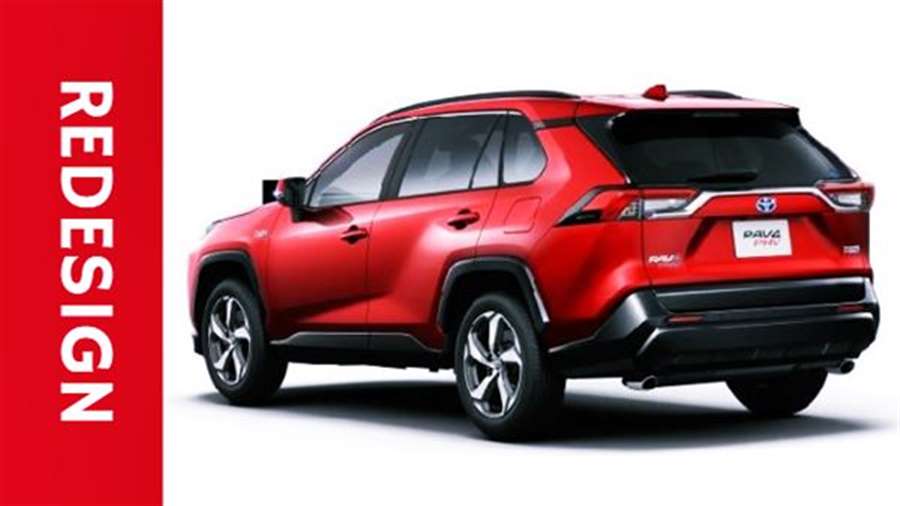
Toyota Rav4 2023 Interior Design
This feature can also be activated or manually disabled by the driver. Generally, there is a button with an image icon of the car that is tilted, and underneath there is a diagonal line that represents the climb. and many others.
Changes can also be felt in the Cabin section of the New Toyota RAV4 2023, the interior design is built very well and equipped with a variety of interesting features that are in it, in terms of interior design looks the latest generation Toyota Rav4 prefers practicality over style. The cabin space is more spacious for storing small cargo, and all the buttons and controls are easy to find and operate. The latest generation 2023 Toyota Rav4 provides many conveniences at the basic level, such as dual-zone automatic climate control, tilt steering wheel, and telescope.
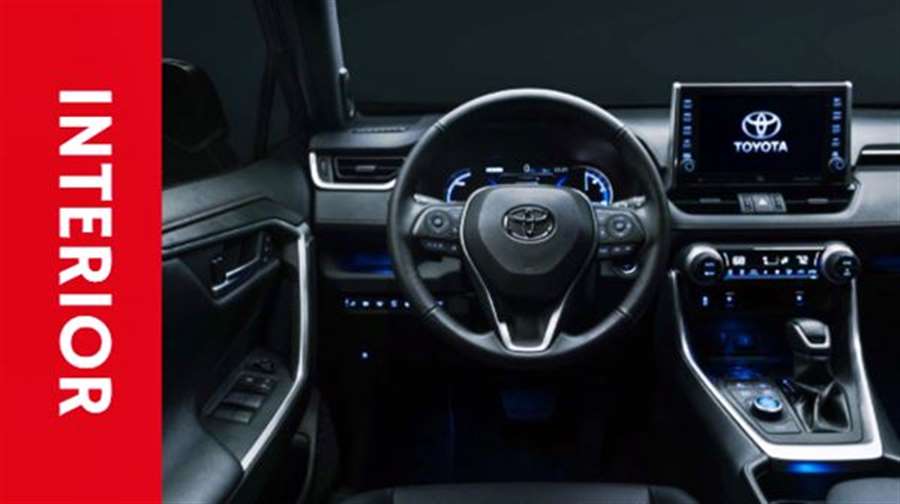
Toyota Rav4 2023 Interior Design
Toyota Rav4 2023 Infotainment
Not much change in the Infotainment section that we get, the latest generation of Toyota Rav4 still comes with a 9.0-inch infotainment screen that emerges from its dashboard and is equipped with multimedia features that Integration Apple CarPlay and Android Auto, as well as onboard Wi-Fi hotspots, are all standard. JBL 11-speaker navigation and stereo systems are available.
Toyota Rav4 2023 Safety Features
currently, we have not obtained the results of safety tests on the latest generation of New Toyota Rav4 2023, but if we refer to the previous generation that has been released by the National Highway Traffic Safety Administration (NHTSA) and the Insurance Institute for Highway Safety (IIHS) has given good value to the RAV4 for accident feasibility. Toyota has been an aggressive adopter of driver assistance features and offers many of those features standard throughout the RAV4 range. we hope for the latest model of the rav4 can get better value than previous generations.
Toyota Rav4 2023 Engine Performance
For its own engine, 2023 All New Toyota Rav4 is equipped with a 2.5-liter four-cylinder engine aided by two electric motors for a combined output of 219 horsepower, this stops a time of 7.4 seconds 60-mph. This model has also been equipped with the best safety system to reduce the risk of collision.
Subaru is preparing a new hot hatch
Some media write that Subaru, in cooperation with Toyota, is preparing a hot hach model with 4x4 drive, with the possibility that the car could also serve as a base for a rally vehicle.
This project is reportedly run under the Super AWD label, while the premiere of the car should be in the fall of 2022.
Apparently, this will not only be a hatchback version of the new generation sports Subaru WRX (which is expected at the same time), but will be below it in the range of the Japanese brand (although these two models will be similar in size).
Both the new hot hatch and the future WRX should have a 2.4-liter turbo gasoline engine, noting that the hot hatch will have less power than the new WRX.
Toyota sold the most cars in 2020, overtaking Volkswagen
Toyota sold the most cars in 2020 and overtook Volkswagen from the first place in the world ranking list, it was announced at the headquarters of the Japanese company in Tokyo.
Last year, Toyota sold 9.528 million cars worldwide, which is 11.3 percent less than in 2019, but it still overtook Volkswagen, because the German manufacturer sold 9.305 million cars, which is a drop of 15.2 percent, Reuters reported.
Last year, due to the coronavirus pandemic, sales of new cars were significantly reduced in all countries, and Toyota coped with it somewhat better because Asia coped much better with the pandemic than Europe and especially the United States.
Toyota states that they achieved better results than the competition, partly due to the larger offer of increasingly sought-after electric cars. Of the 9.528 million vehicles sold in 2020, 23 percent were electric, which is three percent more than in 2019.
2021 Toyota Camry Goes All-Wheel Drive (Again)
Introduced halfway through the 2020 model year, the Toyota Camry's all-wheel-drive option makes a return after a 29-year hiatus.
The late 1980s were a halcyon era for all-wheel-drive cars. Mitsubishi made all-wheel-drive Galants, Honda had the Civic Real Time 4WD, Pontiac introduced the 6000 STE AWD, and Ford offered an all-wheel-drive Tempo. The period gave us various AWD Subarus and Audis, the BMW 325xi, and Mercedes-Benz's 4Matic system. Toyota even built an all-wheel-drive Camry, the All-Trac, from 1988 to 1991. Then the SUV craze took off, everyone bought a Ford Explorer, and all-wheel-drive cars went back to being freaky things for rally-racing fans and rich Vermonters.
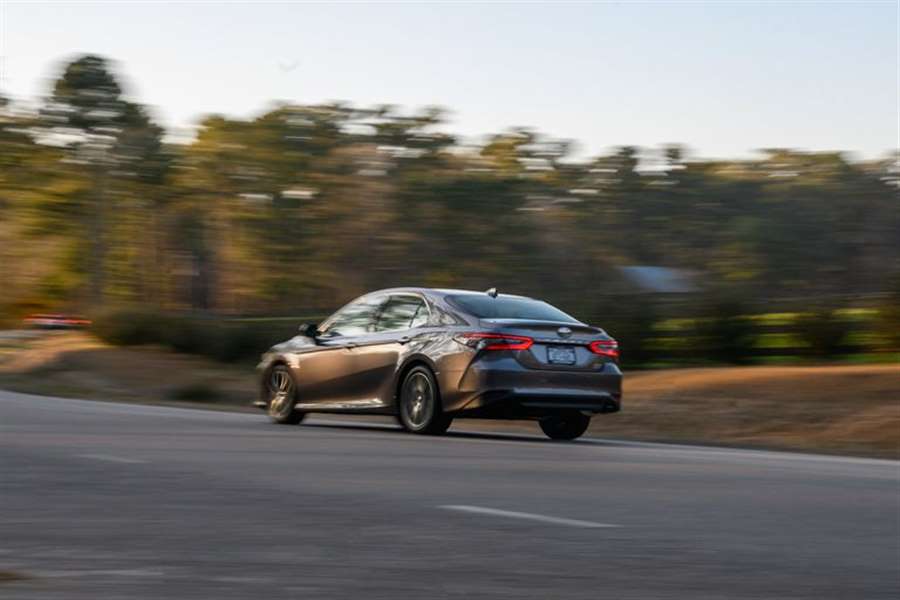
Okay, we're oversimplifying. But if SUVs and crossovers killed the mainstream all-wheel-drive sedan, we can also argue that they're the proximate cause of its current minor renaissance, since carmakers want to give their sedans a fighting chance in showrooms bursting with new utility vehicles. So, Toyota's AWD Camry has returned, this time less because of direct all-wheel-drive competition (Subaru Legacy, Nissan Altima) than to fight the more general adversary known as "all crossovers."
Toyota introduced all-wheel drive as a midyear addition to the 2020 Camry lineup, and it went into production at the company's factory in Kentucky last March. Considering what else was ramping up last March, you'll be forgiven for missing that news. Toyota figures 15 percent of Camry buyers will choose the all-wheel-drive option—which is limited to the North American market—but we predict that only a tiny subset of those will add their own All-Trac badges. That's too bad. As it stands, a subtle AWD emblem on the trunk is the only giveaway that your Camry is packing more than one differential.
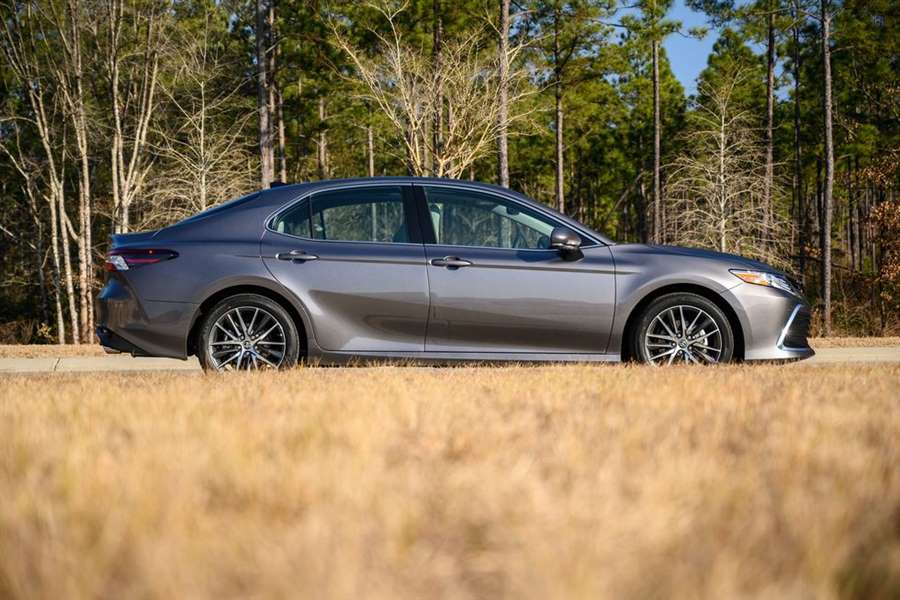
Unless, that is, you jack up the car, which we did to take a peek at that rear diff. The complete system adds roughly a claimed 165 pounds yet makes no impingement on trunk space. The rear seats lose 0.4 inch of headroom, and overall passenger volume declines by less than a cubic foot, both of which are metrics that fall under the heading of "not so you'd notice." Oddly, all-wheel-drive Camrys have a wider turning circle (39.3 feet versus 38.0 for front-drivers) because of a slightly wider rear track and different suspension geometry.
The rear-axle hardware also crowds the exhaust system a bit, resulting in the all-wheel-drive models making one horsepower fewer than their front-drive siblings. We suspect that, in a drag race, the weight penalty will make a bigger difference than the single-pony deficit.
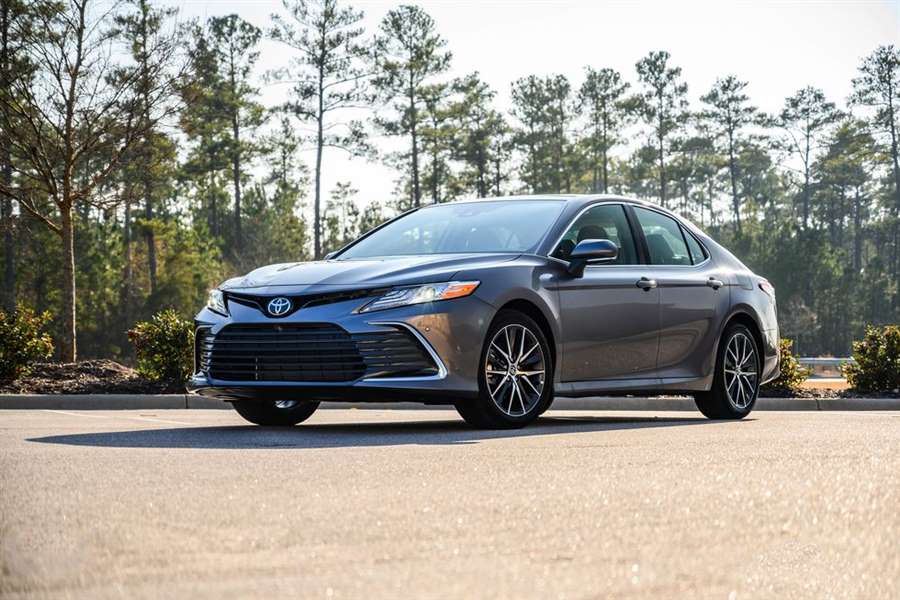
Indeed, the Camry's AWD option is available on every four-cylinder trim level, including the sportier XSE. It's not available with the optional V-6 or hybrid powertrains, presumably because if that's what you're after, Toyota would rather sell you a RAV4 or a Highlander. The naturally aspirated 2.5-liter four is reasonably powerful—202 horsepower in most trims, 205 in the XSE, which has dual exhaust outlets—if rather coarse at high rpm. At least it's hooked to an eight-speed automatic transmission, as opposed to the continuously variable transmissions found in the Camry's competitors from Nissan and Subaru. Decisive upshifts and quick downshifts add some satisfaction to the AWD Camry driving experience, although the word "fun" doesn't quite apply. A TRD hot rod this is not.
In fact, in normal operation, the all-wheel-drive Camry behaves like a front-drive model with some junk under the trunk, disengaging the rear axle via an electromagnetic coupling. When the front wheels slip (or when accelerating from a stop) the rear end shows up for work, deploying a maximum of 50 percent of the engine's available torque to the back. We didn't get a chance to test the system in snow, but on dirt the Camry hooked up and launched after a momentary hint of wheelspin from the front. Traction overrules horsepower, quickly and decisively, which is the point. This wouldn't be a great car for spinning donuts in an empty parking lot, but it should excel on sloppy winter roads.
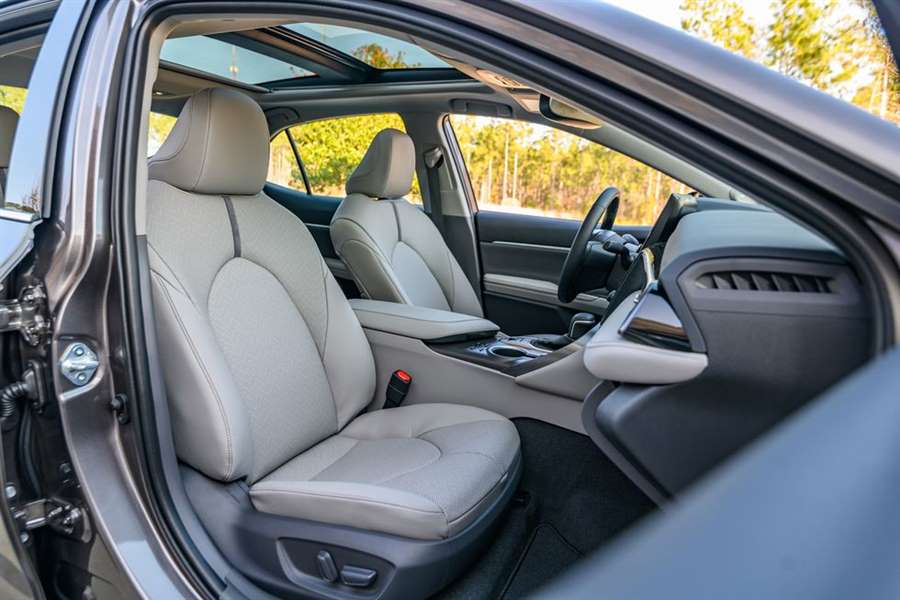
And it's a good buy. At $1400, the all-wheel-drive option doesn't cost much more than a nice set of mounted winter tires. It does exact an ongoing penalty in running costs, though, since the added weight and drag of the system drops the Camry's EPA combined estimate by 3 mpg versus comparable front-wheel-drive models. For the XLE example we drove, the EPA highway rating fell from 38 to 34 mpg, despite the Camry's ability to disconnect its rear axle. Given that Toyota stole some packaging space for the all-wheel-drive system by fitting a smaller fuel tank (14.4 gallons, down from 15.8), the Camry AWD will be visiting gas stations considerably more frequently than its front-drive counterpart.
Taken together, this amounts to a bunch of small drawbacks that you'd forget all about the moment you power up a steep hill in six inches of powder. If that's something you ever need to do in a family sedan, maybe take some inspiration from the all-weather cars of the '80s. You can't buy a new Pontiac 6000 STE, but the all-wheel-drive Toyota Camry is back.
Source: caranddriver.com
How Comfortable Is the 2021 Toyota Venza? We Road-Tripped for 4,000+ Miles
From Los Angeles to Houston and back.
I wrapped up 2020 the same way I started it, with a cross-country trip from Los Angeles to Houston. Last year I drove our long-term Volvo S60 to visit my family during the holidays and had such a great time that I decided to repeat it (and who knows, maybe it will become a tradition). This time, my chariot was our 2021 Toyota Venza—the hybrid-only SUV that serves as an alternative in Toyota's SUV lineup to the off-road-looking RAV4. I've chaperoned the Venza since October, but this was the first time I took it on a long road trip, and overall it excelled at its job. Instead of opting for the direct route, I went via the scenic way.
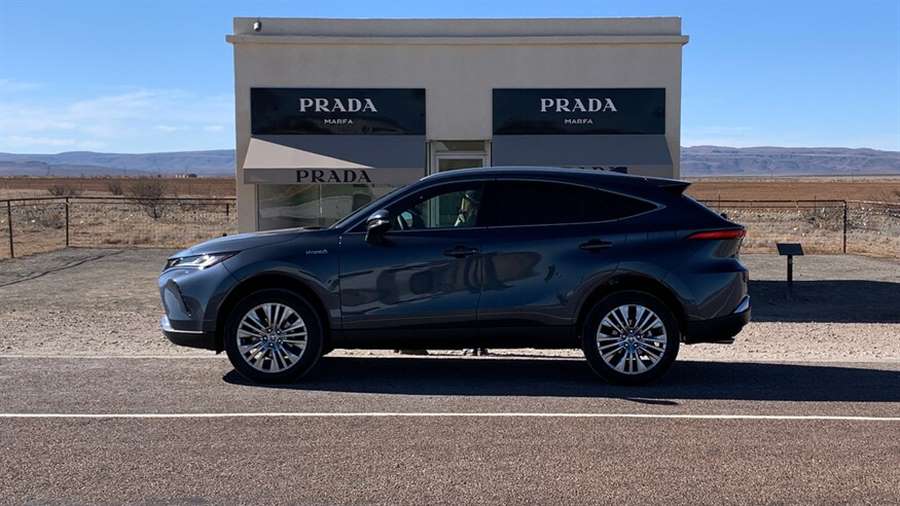
My road trip started before 5 a.m. when I left Playa del Rey and headed south to San Diego, where I then took I-8 to Tucson. Instead of taking the direct and boring way on the I-10, I opted for the more scenic route, driving through the Cuyamaca Mountains, the Imperial Sand Dunes and along the All-American Canal before ending on the I-10 between Phoenix and Tucson. After a quick lunch stop in Tucson, I continued onto El Paso, Texas, where I spent the first night. In total, I traversed 853 miles and averaged 33.5 mpg, according to the Venza's computer.
After 11 hours of driving, I found the seats very comfortable, providing great back and thigh support. The optional SofTex package—which includes leatherette seats, heated, ventilated, and powered front seats, and heated steering wheel—felt worth it. Crossing the desert in the winter means cold and hot temperatures throughout the day, so I used both the heating and ventilation often.
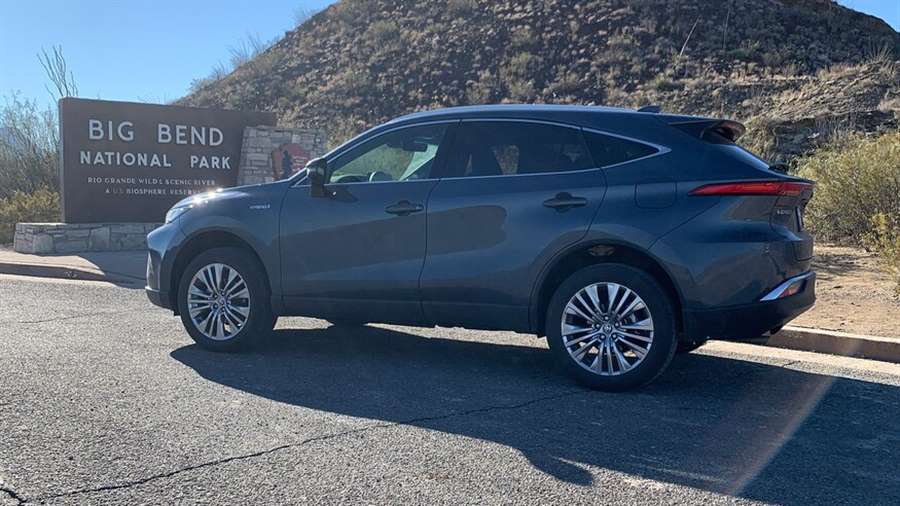
On day two I stopped in in Marfa, Texas, a town in the middle of the Chihuahuan Desert with chic shops and art galleries that will make you think you're on Abbott Kinney Blvd in Venice, California, or somewhere in Brooklyn. During a quick stop in the town of Valentine I visited the famous Prada sculpture that artists Elmgreen and Dragset permanently installed in the middle of the desert—a taste of what Marfa is really all about.
Highway 90 connects the desert cities of Marfa, Alpine, and Marathon in West Texas, and continues along the Rio Grande bordering Mexico. The drive is way more entertaining than I-10, with hills, river crossings, and swoopy corners at times. Border Patrol agents are seen almost every 15 minutes, and with a speed limit of 75 mph, this two-lane highway is captivating to drive. The Venza produces a good amount of tire noise, and the cabin was loud when we drove over harsh pavement, but the ride was always settled. With the 2.5-liter l-4 engine and three electric motors mated to a CVT, the Venza feels adequately powered, but it lacks the punchiness of turbo-four engines or thirsty V-6s of other SUVs in the segment.
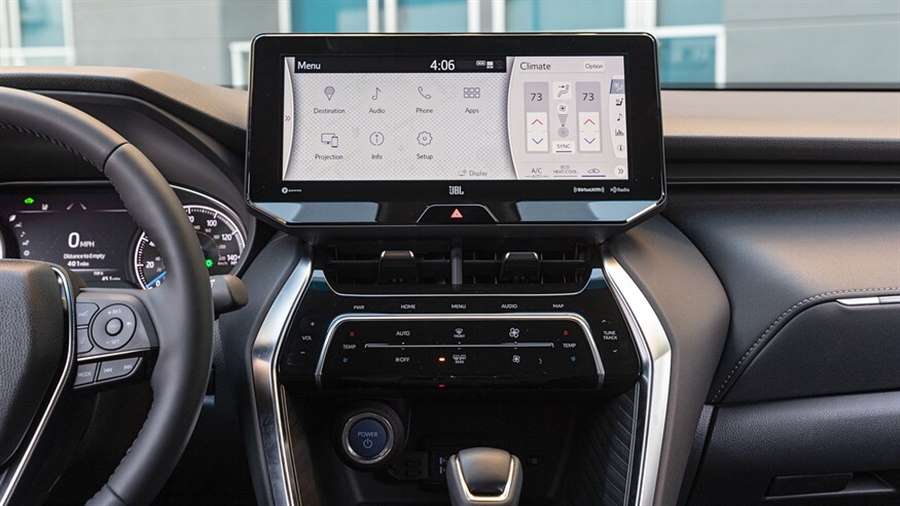
After a night stop in Del Rio, Texas, I headed north to the quaint town of Fredericksburg. Known for its wineries and German heritage, there's a cozy feeling walking on its sidewalks and seeing the historic Vereins-Kirche building. Nestled in the heart of the Texas Hill Country, Fredericksburg is home to many great roads and vistas. There's no doubt that central Texas was blessed with a fantastic landscape.
I arrived to Houston after driving 1,726 miles over three days, averaging 34.2 mpg. I confess I was getting tired toward the end of the road trip, but visiting all of these great places gave me a taste of Texas that I had not savored before despite having lived eight years in the Lone Star state.
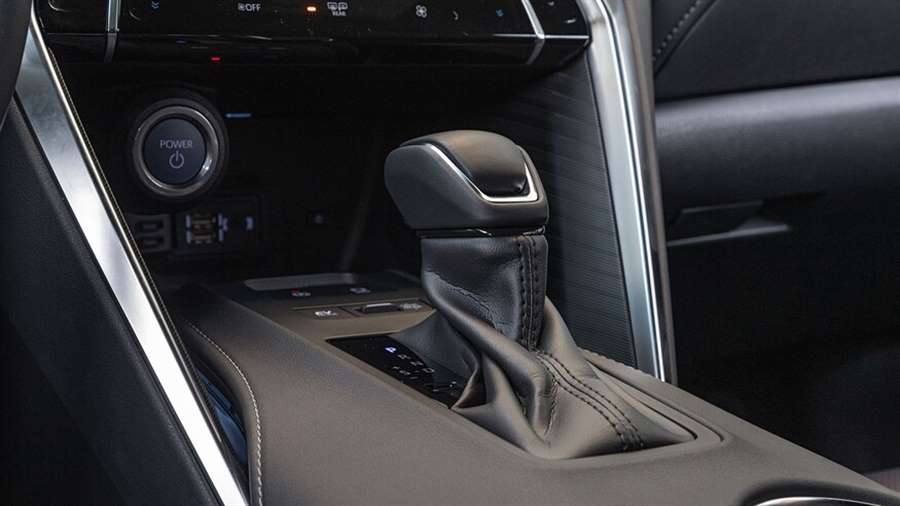
With my brother tagging along on the way back, the drive was more enjoyable. Our first stop was Big Bend National Park, but before we got to our hotel in Alpine, a massive winter storm dropped over 24 inches of snow in some parts of the state, making the roads icy and dangerous. On our drive to Alpine, we saw ice and snow on the road, but we made it to the hotel without any issues. Thankfully, the Venza comes with standard all-wheel drive, which was very useful during this part of the trip.
Big Bend National Park provides some of the most stunning vistas I've seen in my life. The Santa Elena Canyon's enormous walls are split by the Rio Grande, creating a natural division between Mexico and the U.S. Because the park also got a lot of snow, the basin, which is home to many trails, campgrounds, and a lodge, was closed. So we headed west to Big Bend Ranch State Park, taking FM 170, which follows the Rio Grande. With cliffs and hills on both sides of the border, the views were breathtaking, and the twisty turns made this road quite fun. I was most impressed with the landscape in this part of Texas—it seems like a well-kept secret compared to other places in the country. Note to self: Come back with a truck and off-road equipment; there's plenty of trails to experience.
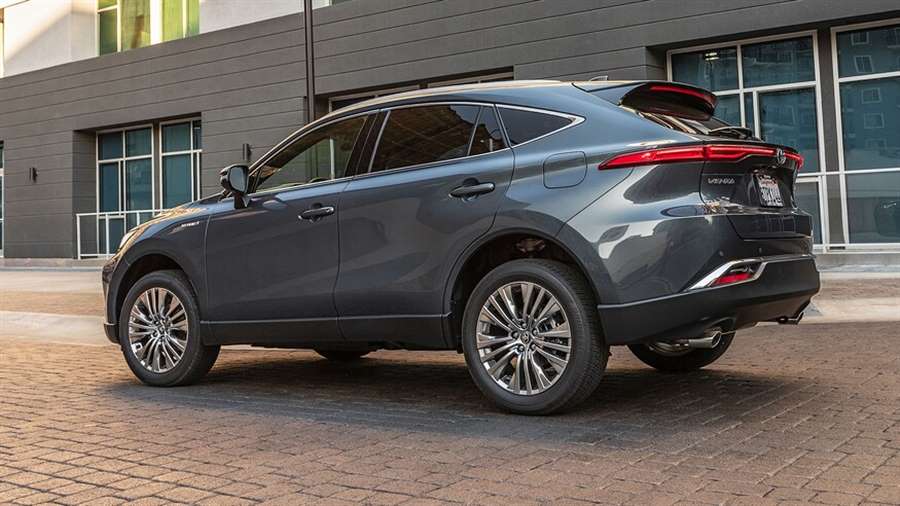
The next day we left Alpine for Tucson. We stopped at El Paso for lunch and noticed how close Ciudad Juarez really is from its northern sister city, as we got a panoramic view of it driving on I-10.
Sitting in the front passenger seat, my brother had quite a bit of trouble with the capacitive touch buttons on the center console. He'd confuse the temperature controls for the radio tuning controls and often hit the wrong button given that they are very touch-sensitive. One of the Venza's weakest points is interior space. Despite being positioned between the RAV4 and the Highlander, it has less space than even its smaller sibling. That was especially notable on the return trip when we were carrying two large suitcases, a bag of golf clubs, and a couple of biggish boxes. Even with the rear seats folded, cargo space is limited.
After a mostly boring drive, dozens of songs, and a couple of podcasts, we were happy to stop in Arizona for the night.
An early wake-up call had us on the road by 7:30, and we continued our way west on I-8. After our visit to White Sands National Park last year, we decided to visit the Imperial Sand Dunes in California for a Sahara-like experience. Although it's not nearly as impressive as the African desert, the scenery is beautiful, and it served as our last stop before we ended our trip.
With 4,020 miles added to the odometer, the Venza proved itself to be a comfortable and efficient SUV. At 33.2 mpg on average, that's a bit under the EPA's ratings, but weather and high speed limits are to blame. There will be more road trips with the Venza, and this one was a great start.
Photos of the road trip are courtesy of Andrés Cortina.
Source: motortrend.com

